
Grigori Aleksandrov
Nacimiento : 1903-01-22, Yekaterinburg, Russian Empire
Muerte : 1983-12-16
Historia
Cineasta soviético conocido especialmente por su realización de los filmes Volga-Volga (1938), El circo (1936), y Octubre (1928) y por su participación en el elenco de actores de El acorazado Potemkin (1925). Estudió violín y piano en la Escuela de Música de Ekaterimburgo. Conoció al director Serguei M. Eisenstein en 1921, trabajando juntos en varias producciones teatrales y dirigiendo sus primeras películas, Stachka (1924), El acorazado Potemkin (1925) y Octubre (1927), una obra acerca de la revolución rusa. En 1934 realizó una comedia musical, Veselye Rebyata, que se convirtió en un éxito de taquilla. Su talento fue usado con frecuencia con fines propagandísticos en la década de 1930 y 1940, bajo el control personal de Stalin. Seguidamente se dedicó a hacer comedias, actuando en casi todas ellas su esposa, Lyubov Orlova, caso de Tsirk (1936), Volga-Volga (1938), Svetly Put (1940), Vesna (1947) entre otras películas. Sus comedias de la década de 1930 alcanzaron cotas de popularidad entre varias generaciones de espectadores soviéticos, así como a nivel internacional. En 1942 Stalin envió una copia de Volga-Volga (1938) a su homónimo norteamericano, Franklin D. Roosevelt. Tras la muerte de Stalin en 1953, experimentó una desaceleración en su trabajo. Durante la década de 1950 fue profesor de dirección fílmica en el Instituto Estatal de Cinematografía (VGIK). Sus últimas películas apenas tuvieron éxito y algunas como Skvorets i lira (1973) ni siquiera fueron estrenadas en los cines. Filmó también varios documentales, incluyendo uno sobre Lenin y otro sobre su esposa, la actriz Lyubov Orlova.

Himself
Eisenstein shot 50 hours of footage on location in Mexico in 1931 and 32 for what would have become ¡Que viva México!, but was not able to finish the film. Following two wildly different reconstruction attempts in 1939 (Marie Seton's 'Time in the Sun') and 1979 (Grigori Alexandrov's '¡Que viva México!') Kovalov has here compiled another hypothetical version of what Eisenstein's film might have been.

Writer
A documentary on the life of the famous actress, deceased wife of the director Grigoriy Aleksandrov.

Director
A documentary on the life of the famous actress, deceased wife of the director Grigoriy Aleksandrov.
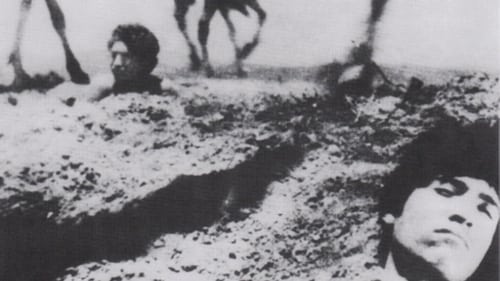
Editor
Film en cuatro episodios, más un prólogo y un epílogo. El prólogo presenta imágenes alegóricas del México prehispánico. El episodio "Sandunga" recrea los preparativos de una boda indígena en Tehuantepec. "Fiesta" desarrolla el ritual de la fiesta brava, mientras que "Maguey" escenifica la tragedia de un campesino victimado por rebelarse contra su patrón. "Soldadera" muestra el sacrificio de una mujer revolucionaria. El epílogo, también conocido como "Día de muertos", se refiere al sincretismo de las distintas visiones que coexisten en México alrededor del tema de la muerte.

Screenplay
Film en cuatro episodios, más un prólogo y un epílogo. El prólogo presenta imágenes alegóricas del México prehispánico. El episodio "Sandunga" recrea los preparativos de una boda indígena en Tehuantepec. "Fiesta" desarrolla el ritual de la fiesta brava, mientras que "Maguey" escenifica la tragedia de un campesino victimado por rebelarse contra su patrón. "Soldadera" muestra el sacrificio de una mujer revolucionaria. El epílogo, también conocido como "Día de muertos", se refiere al sincretismo de las distintas visiones que coexisten en México alrededor del tema de la muerte.

Co-Director
Film en cuatro episodios, más un prólogo y un epílogo. El prólogo presenta imágenes alegóricas del México prehispánico. El episodio "Sandunga" recrea los preparativos de una boda indígena en Tehuantepec. "Fiesta" desarrolla el ritual de la fiesta brava, mientras que "Maguey" escenifica la tragedia de un campesino victimado por rebelarse contra su patrón. "Soldadera" muestra el sacrificio de una mujer revolucionaria. El epílogo, también conocido como "Día de muertos", se refiere al sincretismo de las distintas visiones que coexisten en México alrededor del tema de la muerte.

Film en cuatro episodios, más un prólogo y un epílogo. El prólogo presenta imágenes alegóricas del México prehispánico. El episodio "Sandunga" recrea los preparativos de una boda indígena en Tehuantepec. "Fiesta" desarrolla el ritual de la fiesta brava, mientras que "Maguey" escenifica la tragedia de un campesino victimado por rebelarse contra su patrón. "Soldadera" muestra el sacrificio de una mujer revolucionaria. El epílogo, también conocido como "Día de muertos", se refiere al sincretismo de las distintas visiones que coexisten en México alrededor del tema de la muerte.

General (uncredited)
Soviet intelligence spouses — Lyudmila ("Lyre") and Fyodor ("Starling") Grekov at the beginning of the Great Patriotic War are tasked with settling in Germany. Personnel intelligence officers with vast experience are successfully introduced into German society and begin to work actively. At the end of the war, during the bombing of Berlin, fate separates them, but then they will meet in the new Germany and continue their work.

Writer
Soviet intelligence spouses — Lyudmila ("Lyre") and Fyodor ("Starling") Grekov at the beginning of the Great Patriotic War are tasked with settling in Germany. Personnel intelligence officers with vast experience are successfully introduced into German society and begin to work actively. At the end of the war, during the bombing of Berlin, fate separates them, but then they will meet in the new Germany and continue their work.

Director
Soviet intelligence spouses — Lyudmila ("Lyre") and Fyodor ("Starling") Grekov at the beginning of the Great Patriotic War are tasked with settling in Germany. Personnel intelligence officers with vast experience are successfully introduced into German society and begin to work actively. At the end of the war, during the bombing of Berlin, fate separates them, but then they will meet in the new Germany and continue their work.

Script
Documental que narra, en base al libro de John Reed, el desarrollo de la Revolución Rusa de 1917 mezclando imágenes de archivo originales y películas de Eisenstein, Aleksandrov y Pudovkin.

Writer

Writer
The end of the 1950s. The Chinese passenger plane, following the Beijing-Moscow flight, enters a thunderstorm and makes an emergency landing in the Baikal region. In addition to the Soviet citizen Varvara Komarova, all other passengers are foreigners. Using a stop, they explore new cities and get acquainted with the life, work and rest of Soviet people.

Director
The end of the 1950s. The Chinese passenger plane, following the Beijing-Moscow flight, enters a thunderstorm and makes an emergency landing in the Baikal region. In addition to the Soviet citizen Varvara Komarova, all other passengers are foreigners. Using a stop, they explore new cities and get acquainted with the life, work and rest of Soviet people.

Himself (archive footage)
A USSR documentary about the filmmaker Sergei Eisenstein

Director
March 9th, 1953. A gray, sad day. Clouds float low over the Kremlin towers. A city that unrecognizably grew, prettier and matured - this Moscow froze in solemn grief. The country escorts its father and leader, Joseph Stalin.

Cinematography
The main film character, an ordinary peasant Martyn Borylya, decided to get a noble order. Having chosen a little and primitive aim, in the chase of the artificial values, he loses everything.

Screenplay
The young composer Mikhail Glinka performs his new work at a soiree at earl Vielgorsky's house. However, the public is accustomed to Western music, and reacts coldly to the creation of the composer. This makes him very sad, but soon he decides to go learn the art of music in Italy. After returning from Italy, he is full of desire to write national Russian opera. Vasily Zhukovsky proposes a subject: a feat of Ivan Susanin. Tsar Nicholas I change the name of the opera to A Life for the Tsar and assigns a librettist - Baron Rosen. Acquaintance with the future co-author shocked Glinka: Rosen speaks Russian with a noticeable German accent. The premiere was successful, but Glinka was still not entirely happy with the libretto: "False words were written by Rosen". When Nicholas I learned that Ruslan and Lyudmila was written on Pushkin's subject, he sees it as sedition. The bitter experience of the composer brighten his supporters.

Director
The young composer Mikhail Glinka performs his new work at a soiree at earl Vielgorsky's house. However, the public is accustomed to Western music, and reacts coldly to the creation of the composer. This makes him very sad, but soon he decides to go learn the art of music in Italy. After returning from Italy, he is full of desire to write national Russian opera. Vasily Zhukovsky proposes a subject: a feat of Ivan Susanin. Tsar Nicholas I change the name of the opera to A Life for the Tsar and assigns a librettist - Baron Rosen. Acquaintance with the future co-author shocked Glinka: Rosen speaks Russian with a noticeable German accent. The premiere was successful, but Glinka was still not entirely happy with the libretto: "False words were written by Rosen". When Nicholas I learned that Ruslan and Lyudmila was written on Pushkin's subject, he sees it as sedition. The bitter experience of the composer brighten his supporters.

Director
Soviet and American soldiers are meeting on the shores of the Elbe river in Germany in 1945.

Screenplay
A drab woman scientist, working on machine to harness solar energy, and a pert concert singer look-alike being courted to play her in a movie swap identities and find personal growth, professional success, love, and happiness.

Director
A drab woman scientist, working on machine to harness solar energy, and a pert concert singer look-alike being courted to play her in a movie swap identities and find personal growth, professional success, love, and happiness.

Director
The film is about the Soviet People's patriotism and friendship.

('Potemkin' sequence) (archive footage)
Archive footage from Potemkin (1925), with English dialogue dubbed in by American actors, is combined with new footage to tie together the brave stand of Odessa Russian guerrilla bands of the 1940's against German forces with the similar situation of 1905 when Odessa citizens aided in the revolt against the Czar as depicted in Eisenstein's classic Potemkin (1925).

Director
Tanya Morozova, an illiterate but industrious textile factory worker, finds happiness through her education and the Stakhanovite movement. She becomes a shock labourer and ascends through the Party ranks, ultimately being elected as a member of the Supreme Soviet.

Director
Second attempt to create a feature film out of the 200,000-plus feet of film which Soviet film-maker Sergei Eisenstein shot during 1931-32 in Mexico for American socialist author Upton Sinclair, his wife and a small company of investors. The projected film, to be called "Que Viva Mexico", was never completed due to exhaustion of funds and Stalin's demand that Eisenstein return to the USSR (he had been absent since 1929). The first attempt at editing the footage, in the USA, resulted in "Thunder Over Mexico", released in 1934. In 1940, Marie Seton, from the UK, acquired some of the footage from the Sinclairs in an attempt to make a better cutting according to Eisenstein's skeletal outline for the proposed film. This film has apparently been lost.
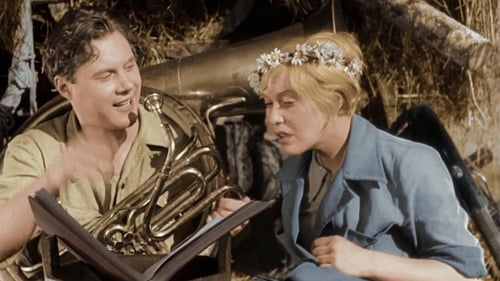
Writer
Widely claimed to be Joseph Stalin's favorite movie, this classic musical comedy is a must-see. The action takes place on a steamboat on the iconic Volga River, as two groups of performers travel to Moscow to perform in the Moscow Musical Olympiad.

Director
Widely claimed to be Joseph Stalin's favorite movie, this classic musical comedy is a must-see. The action takes place on a steamboat on the iconic Volga River, as two groups of performers travel to Moscow to perform in the Moscow Musical Olympiad.
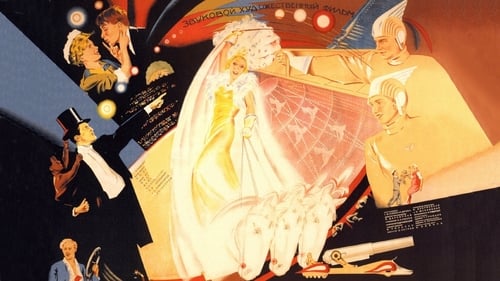
Writer
An American circus performer finds herself the victim of racism after it is revealed that she's the mother of a mixed-race child. In the midst of the public scandal, she finds happiness, love, and refuge in the USSR.

Director
An American circus performer finds herself the victim of racism after it is revealed that she's the mother of a mixed-race child. In the midst of the public scandal, she finds happiness, love, and refuge in the USSR.

Writer
Merry Fellows was the first Soviet musical comedy. Set in Odessa and Moscow in the 1930s. Shepherd Kostya Potekhin (Utyosov) is mistaken for an international concert star. He falls in love with Anyuta (Orlova) and plays the "star" for her. In a cascade of comic musical numbers he becomes the leader of a Jazz-Band and gives a hilarious show at the Odessa Music Hall. Now he is destined to perform at the Bolshoi Theatre in Moscow.

Director
Merry Fellows was the first Soviet musical comedy. Set in Odessa and Moscow in the 1930s. Shepherd Kostya Potekhin (Utyosov) is mistaken for an international concert star. He falls in love with Anyuta (Orlova) and plays the "star" for her. In a cascade of comic musical numbers he becomes the leader of a Jazz-Band and gives a hilarious show at the Odessa Music Hall. Now he is destined to perform at the Bolshoi Theatre in Moscow.

Co-Director
During his adventure in Mexico, Sergei Eisenstein made footage of a Mexican "Death Day" celebration for inclusion in his "Que Viva Mexico!" film project. When the 200,000-plus feet of film he eventually exposed in Mexico was first attempted to be made into a feature film, "Thunder Over Mexico", the producers excluded the Death Day material for subsequent compilation as an independent short subject. Silent with music track and explanatory English intertitles.

Co-Director
As was common in Diaz's Mexico, a young hacienda worker finds his betrothed imprisoned and his life threatened by his master for confronting a hacienda guest for raping the girl. This film is the first of several attempts to make a feature-length motion picture out of the 200,000-plus feet of film shot by Sergei Eisenstein, on photographic expedition in Mexico during 1931-32 for Upton Sinclair and a cadre of private American producer-investors. Silent with music and English intertitles.

Director
Unedited film that Sergei Eisenstein, Grigoriy Aleksandrov and Eduard Tisse shot in Mexico 1931-32. This record only represents the 200,000-plus feet of unedited film that Sergei Eisenstein, Grigoriy Aleksandrov and Eduard Tisse shot in Mexico 1931/32 for Mary and Upton Sinclair and three American co-financiers. It was Eisenstein's vision to end up with movie about Mexico in six parts called "Calavera", "Sandunga", "Maguey", "Fiesta", "Soldadera", and "Epilogue". The project was canceled before it was completed due to cost overruns and months-delayed completion, and the producers refused to let Eisenstein attempt to edit anything from the material he had finished after Iosif Stalin called him back to the USSR. From this footage the following pictures were subsequently edited by other hands: Thunder Over Mexico (1933), Eisenstein in Mexico (1933), Death Day (1934), Time in the Sun (1940), and Que Viva Mexico (1979).

Editor
Un breve film-ensayo en que las imágenes comentan una canción. (FILMAFFINITY)

Screenplay
Un breve film-ensayo en que las imágenes comentan una canción. (FILMAFFINITY)

Director
Un breve film-ensayo en que las imágenes comentan una canción. (FILMAFFINITY)

Writer
This film shows contrasting views of women with problematic pregnancies and the outcomes resulting when they seek out a back-alley abortionist, a trained and licensed abortion provider in a clinic, or an obstetrician capable of performing a Caesarian Section. The full film appears to be lost, but shortened versions, including one with dialogue scenes added in Germany in 1935, can be found on the internet. Additionally, Eisenstein's role in making the picture remains unclear: did he direct some or all of it, just edit it, or merely leave it to Alexandrov and Tisse to make? Released in the USA 1930 in a 65 minute (5800 ft.) version with English intertitles and a music track under the title BIRTH.
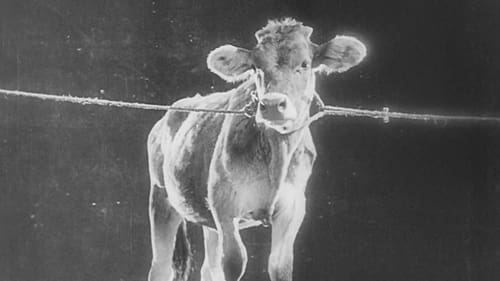
Writer
A principios del siglo XX, una serie de adelantos técnicos transforma la vida de una comunidad campesina: el establecimiento de una granja-factoría para la cría de vacas y la llegada de un tractor favorecen el abandono de ciertas tradiciones seculares y la aparición de un nuevo tipo de sociedad.

Director
A principios del siglo XX, una serie de adelantos técnicos transforma la vida de una comunidad campesina: el establecimiento de una granja-factoría para la cría de vacas y la llegada de un tractor favorecen el abandono de ciertas tradiciones seculares y la aparición de un nuevo tipo de sociedad.
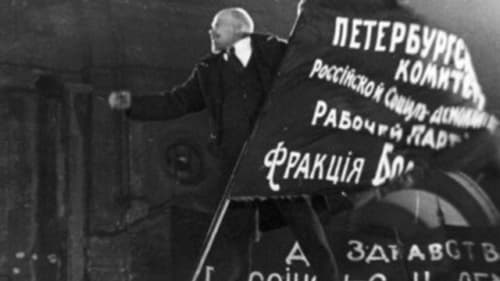
Director
Reconstrucción de los acontecimientos ocurridos desde Febrero hasta Octubre de 1917. Una película en la que, siguiendo la filosofía comunista, no había personajes principales. La habilidad de Eisenstein y su experiencia se ve en los rápidos movimientos y en el ritmo en el montaje, así como en la construcción de intensas secuencias que no fueron bien entendidas por las tempranas generaciones rusas. El estreno se retrasó hasta 1928 debido a la presión de algunos grupos influyentes y, además, se cortaron algunas escenas. Aparecen en el filme muchos de los protagonistas de la revolución: los Guardias Rojos, los soldados y los marineros.

Screenplay
Reconstrucción de los acontecimientos ocurridos desde Febrero hasta Octubre de 1917. Una película en la que, siguiendo la filosofía comunista, no había personajes principales. La habilidad de Eisenstein y su experiencia se ve en los rápidos movimientos y en el ritmo en el montaje, así como en la construcción de intensas secuencias que no fueron bien entendidas por las tempranas generaciones rusas. El estreno se retrasó hasta 1928 debido a la presión de algunos grupos influyentes y, además, se cortaron algunas escenas. Aparecen en el filme muchos de los protagonistas de la revolución: los Guardias Rojos, los soldados y los marineros.
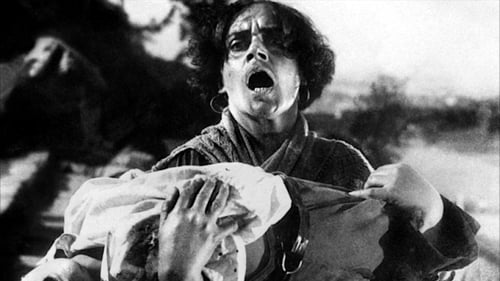
First Assistant Director
Basada en hechos reales ocurridos en 1905, narra como la tripulación del acorazado Príncipe Potemkin de Táurida se cansan del tratamiento vejatorio e injusto de los oficiales. El detonante de la situación es la carne podrida que éstos quieren que los marineros se coman. Con este motín comienza el reguero revolucionario por Odesa y toda Rusia.

Chief Officer Giliarovsky
Basada en hechos reales ocurridos en 1905, narra como la tripulación del acorazado Príncipe Potemkin de Táurida se cansan del tratamiento vejatorio e injusto de los oficiales. El detonante de la situación es la carne podrida que éstos quieren que los marineros se coman. Con este motín comienza el reguero revolucionario por Odesa y toda Rusia.

Editor
Basada en hechos reales ocurridos en 1905, narra como la tripulación del acorazado Príncipe Potemkin de Táurida se cansan del tratamiento vejatorio e injusto de los oficiales. El detonante de la situación es la carne podrida que éstos quieren que los marineros se coman. Con este motín comienza el reguero revolucionario por Odesa y toda Rusia.
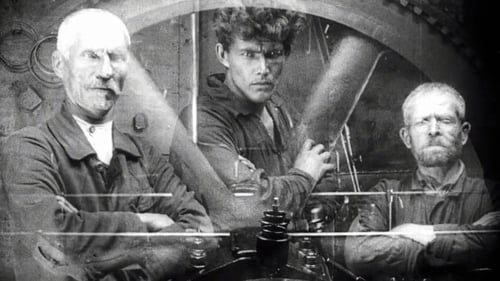
Assistant Director
Rusia zarista. Los obreros de una importante empresa están descontentos y, después de una reunión, deciden ir a la huelga. El director de la empresa informa de la situación a los responsables políticos y éstos envían a la policía para abortar la huelga. La tensión se dispara cuando un obrero se suicida al ser acusado injustamente de un robo.

Factory Foreman
Rusia zarista. Los obreros de una importante empresa están descontentos y, después de una reunión, deciden ir a la huelga. El director de la empresa informa de la situación a los responsables políticos y éstos envían a la policía para abortar la huelga. La tensión se dispara cuando un obrero se suicida al ser acusado injustamente de un robo.

Screenplay
Rusia zarista. Los obreros de una importante empresa están descontentos y, después de una reunión, deciden ir a la huelga. El director de la empresa informa de la situación a los responsables políticos y éstos envían a la policía para abortar la huelga. La tensión se dispara cuando un obrero se suicida al ser acusado injustamente de un robo.
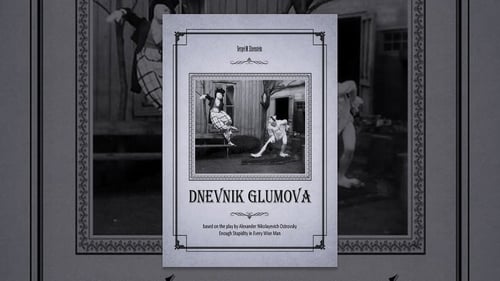
Glumov 2, Golutvin
Filmic insert to Eisenstein's modernized, free adaptation of Ostrovskiy's 19th-century Russian stage play, "The Wise Man" ("Na vsyakogo mudretsa dovolno prostoty"). The anti-hero Glumov tries to escape exposure in the midst of acrobatics, derring-do, and farcical clowning. Several members of Eisenstein's troupe at the legendary "Proletkult" stage theatre in Moscow briefly appear in this little film.
















